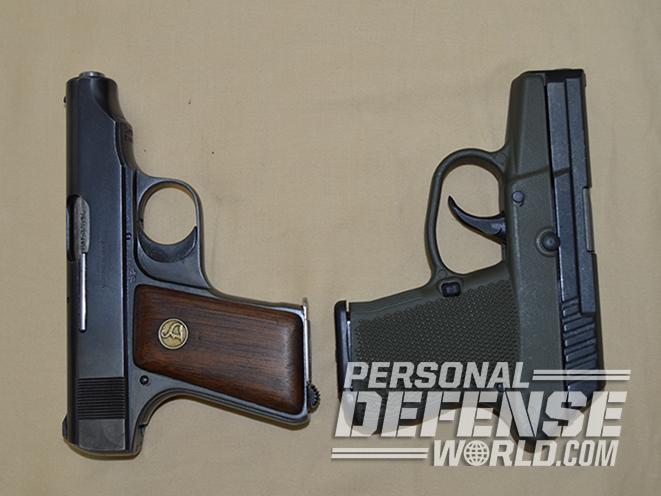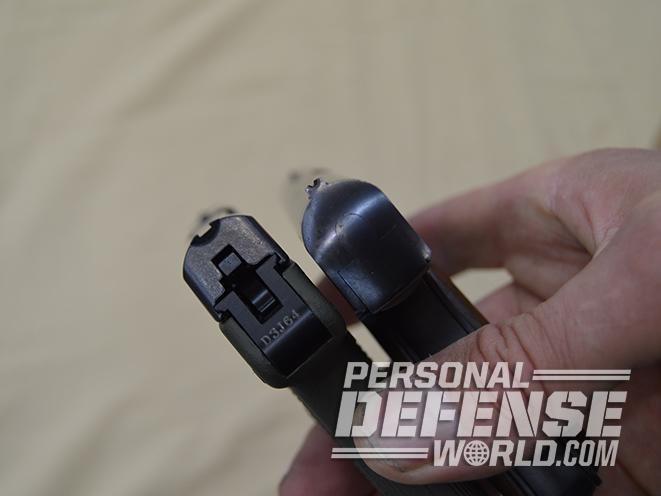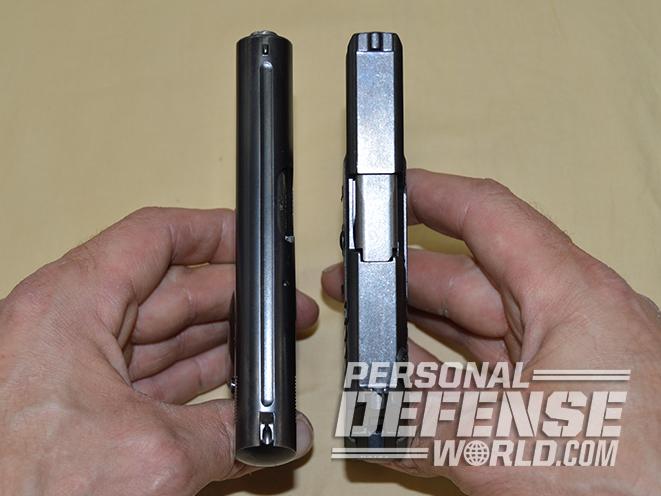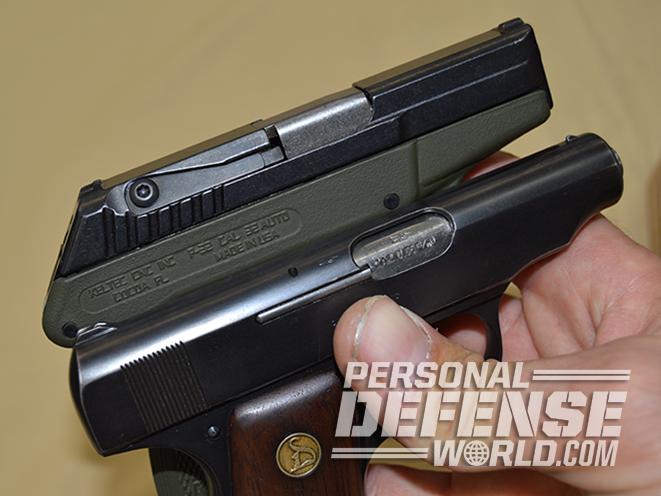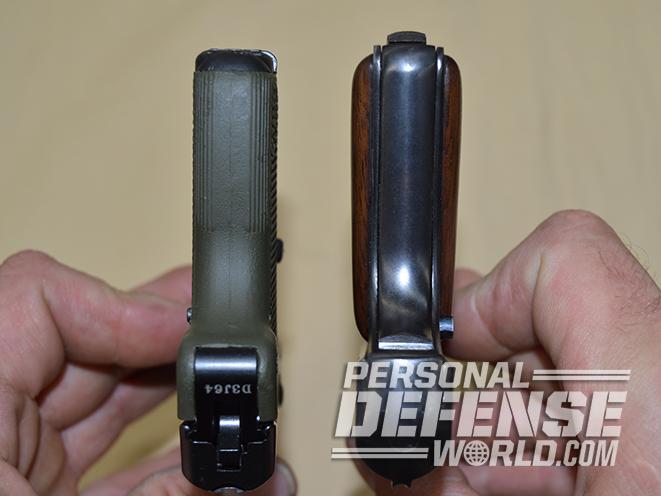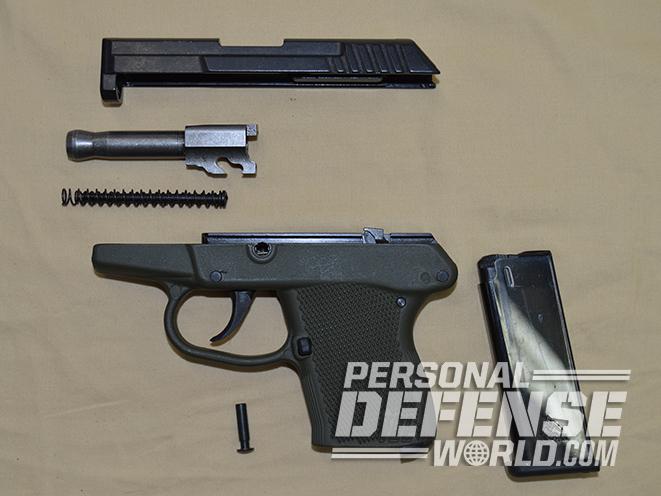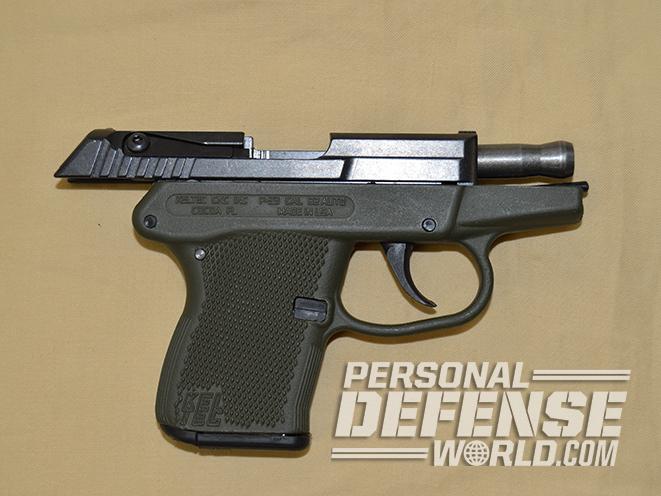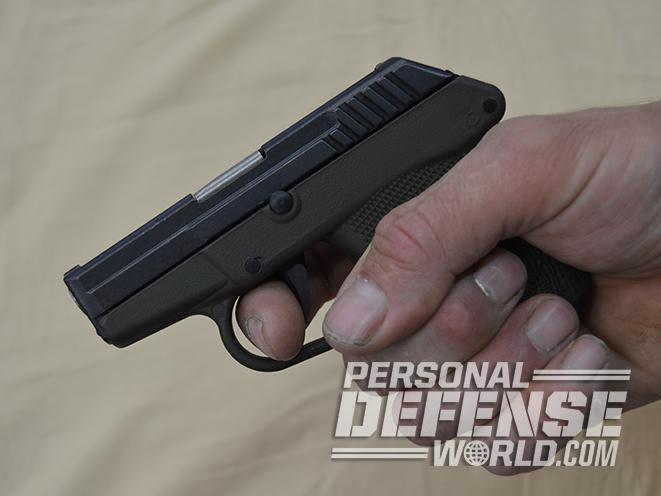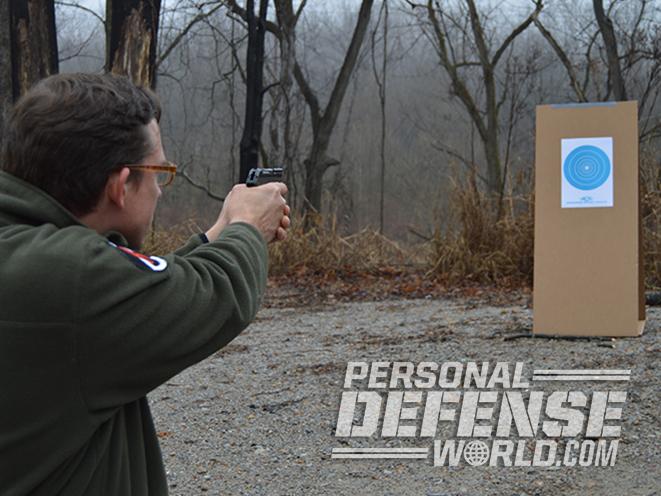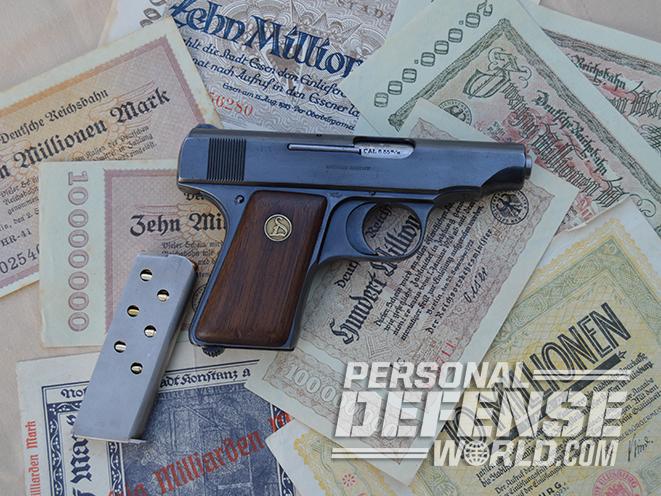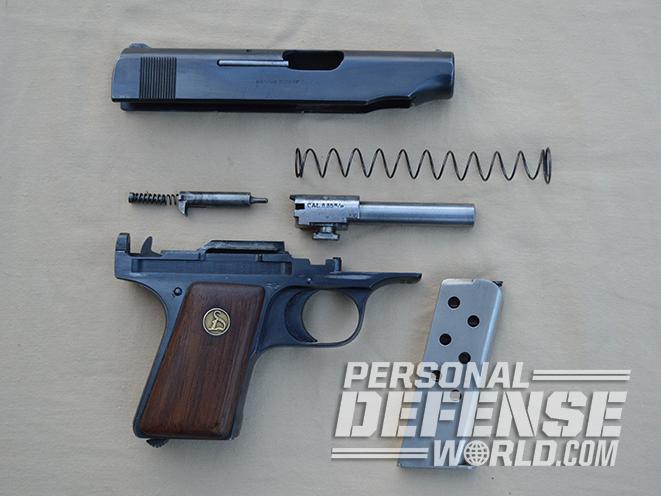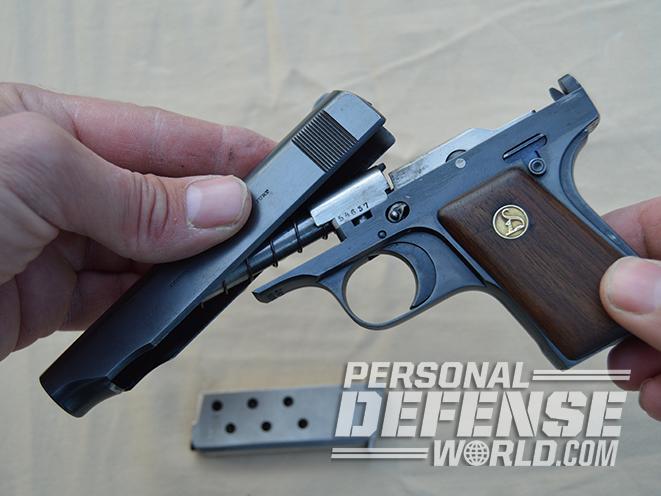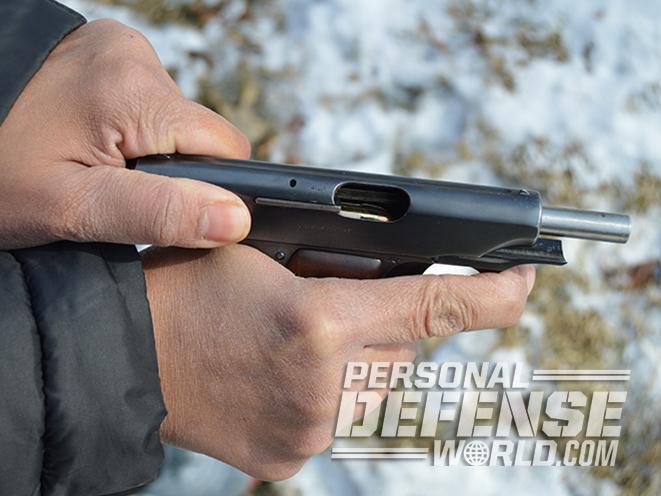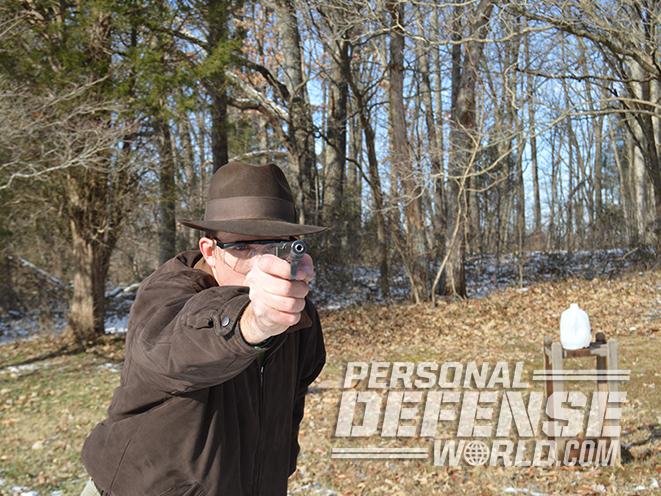In the last few decades, the use of polymers in firearms manufacturing has revolutionized the industry and dramatically changed the types of firearms Americans carry for protection. From a concealed-carry standpoint, the polymer era has had at least two major effects. First, the weight reduction realized with polymer grip frames makes it easier to carry larger-caliber handguns than in the past. Second, the production efficiencies of the material generally reduced the cost of firearms.
Compact, lightweight, polymer-framed .380 ACP, 9mm and .40 S&W pistols are currently very popular for concealed carry. They are significantly smaller than their full-sized brethren, but they are by no means small when compared to true pocket pistols—guns that fit within your open hand. I have to wonder how many of them, purchased with the good intent of daily carry, will ultimately end up at home in a drawer because they just aren’t small or light enough.
About 15 years ago, when Kel-Tec introduced its polymer-framed P-32 pistol in .32 ACP, the company brought the true pocket pistol into modern times. Only 5.1 inches long and weighing a mere 9.4 ounces when loaded with seven rounds, this was a pistol that could be carried in virtually any pants pocket with about as much effort as it took to carry a wallet. The P-32 was a runaway success, which made me wonder how it would compare to the old-school steel pocket autoloaders of the previous century.
Advertisement — Continue Reading Below
The Kel-Tec P-32 is about the same physical size as my 1923 Ortgies .25 ACP Vest Pocket pistol. Like the P-32, the Ortgies was popular, well made, relatively inexpensive (though for reasons you might not expect) and quite innovative in its time. It was the ideal old-school comparison piece to the P-32 in everything except caliber. (Ortgies made .32 ACP and .380 ACP pistols, but they are a bit too big to be classified as true pocket pistols.)
The Ortgies pistols were made in Germany just after World War I and stayed in production until the plant was shut down in April of 1923 by the Inter-Allied Military Control Commission. Germany lost the war, and the terms of the armistice put strict regulations on its arms industry. Though the pistols were clearly for civilian use, the Commission did not like the fact that the Germans had made nearly half a million of them in the span of less than five years, mostly under the quasi-government ownership of Deutsche Werke.
- RELATED STORY: .380 ACP Battle – The Kel-Tec P-3AT vs. The Ruger LCP
The German people were suffering under the worst inflation the world had ever seen at the time, and the country was on the verge of economic collapse. The German government’s position was that it needed to keep its citizens employed. Germany’s financial hardship, aggravated by the wildly diminishing value of its currency, made the Ortgies products quite a bargain on the world market. In 1923, this little .25-caliber pistol probably sold for around $6. That’s about $73 in today’s money. With modern manufacturing techniques and equipment, you could not make this pistol for that little amount today.
Advertisement — Continue Reading Below
Though the attractive price was a major selling point, Ortgies pistols also had design innovation on their side. They were natural pointers, similar to the FN-Browning Model 1910, with their edges smoothly sculpted to avoid snagging on the shooter’s clothes during the draw. Beautifully made with Germanic attention to precision, detail and finish, the pistols were planned from the start for efficient manufacture. They used a striker rather than a hammer and had a peculiar safety in their grips intended to allow them to be safely carried loaded and cocked with a round in the chamber.
The Kel-Tec P-32 retails for around $325 today. It’s a lot more expensive than the Ortgies was, but in fairness, the P-32 was created in a normal, healthy economy—not one where you needed to take a wheelbarrow full of currency to the store to buy anything.
Like the Ortgies, the P-32 was thoughtfully designed to be efficiently manufactured and has quite a few special features of its own reflecting the technological advances of recent times. The Ortgies is steel with wooden grips. The P-32 has a molded polymer grip and trigger, a lightweight aluminum subchassis nestled and pinned inside the frame, and a steel barrel and slide that lock together. By keeping steel to a minimum, its weight is reduced. While the .25 ACP Ortgies weighs 15 ounces loaded with seven rounds, the P-32 is only 9.4 ounces with seven rounds of .32 ACP.
Advertisement — Continue Reading Below
Rather than using separate, removable grip panels, the P-32 has checkering molded directly into the polymer grip frame. It is amazingly slim at only 0.75 inches thick. The slide of the Ortgies is actually thinner (0.71 inches), but the wooden grip panels widen it to 0.9 inches and give it a nice oval shape that doesn’t feel like you are gripping a matchbox. The P-32 grip isn’t as pleasant, but it’s more concealable. The Kel Tec’s molded-in checkering helps you maintain a grip on it.
Slugging It Out
Both guns are meant to be carried with a round in the chamber. The Orgties carries cocked and sort of locked. After chambering a round, the gun is ready to fire. The safety is actuated by pressing the small button on the left side of the frame. This causes what looks like a grip safety to pop out along the backstrap of the frame. As long as that grip safety is out, the pistol will not fire. To shoot, you just squeeze the pistol in your grip to depress the backstrap safety and pull the trigger. The safety will not reengage unless the button on the left side of the frame is pressed again. This unique safety allows the Ortgies to be brought into action a lot faster than its rival autoloaders with the more typical rotating lever-style safety.
In contrast, the P-32 actually has no manually operated safety. Its double-action-only (DAO) trigger functions as the only safety. The trigger must be fully depressed to fire the pistol. The pull is quite smooth, travels about an inch and requires a surprisingly light 5 pounds of force. That’s about the same pull as the Ortgies’ single-action trigger, only longer. The P-32’s trigger assembly seems to compensate for the little matchbox feel of the grips and allows for quite accurate shooting.
Advertisement — Continue Reading Below
The P-32 is actually not a DAO in the commonly understood sense—it must be cocked before the trigger will function. Its tiny hammer is visible but can’t practically be thumbed back manually. This means that in the event of a misfire, the shooter needs to manually rack the side back to cock the pistol before a trigger pull will draw the hammer through its arch again. Racking the slide is the same procedure used for re-cocking a hammerless autoloader, too, so the Ortgies and P-32 have that in common.
- RELATED STORY: 5 Mighty Mouse Guns Chambered in .25 and .32 ACP
Of the two pistols, the P-32 was more challenging to shoot well. I tested them both at 7 yards. The Ortgies shot about 2 inches high, and the P-32 was just the opposite. Both are inherently accurate, with the edge going to the single-action Ortgies. If you can see its tiny sights (half the size of the P-32’s sights), it can shoot five-shot groups of 1.38 inches from the bench. Naturally, you can forget about using those sights in an adrenaline-charged life-or-death encounter. In that case, you point the gun like you point your finger. My wife was able to point shoot a five-round string in five seconds into a 4.5-inch group on a gallon milk jug the first time she shot the Ortgies. She had no issues with the mild recoil from the 55-grain FMJ ammo. The pistol also has a little triggerguard, only 0.77 inches tall. It’s just big enough for my finger, but larger hands might have a harder time with it.
The Kel-Tec P-32’s trigger required more practice and a consistent grip before I could shoot it well. There was also more recoil with it than the Ortgies, but it was manageable. The polymer grip has nothing to bite you, unlike the sharp-edged triggerguard of the Ortgies. From the bench, I consistently obtained five-shot groups just under 2 inches. Like any DAO, it takes practice to iron out your technique and develop some muscle memory. The 5-pound trigger pull on this pistol might be lighter than some are comfortable carrying in their pocket, but it makes it faster to master. Though the Kel Tec P-32 looks clumsy compared to the Ortgies, it pointed naturally too, and proved nearly as accurate in fast shooting after a few boxes of practice ammo.
Advertisement — Continue Reading Below
The distance from the backstrap to the trigger pad on a little pocket pistol is much shorter than a full-sized pistol. Shooting any pocket gun requires some unnatural-feeling trigger finger positioning. DAO guns are less forgiving of an inconsistent technique, so practice with them is critical to safe and accurate shooting, in my opinion.
The Victor?
After a day at West Point, Kentucky’s famous Knob Creek Range, I decided I liked the P-32 so much that I would get one. Its feathery weight and shootability were the predominant factors leading to this decision. My wife, however, preferred the lower recoil, thicker grip and single action of the Ortgies and announced that she was taking it for her own use. I was able to get her two extra brand-new magazines from Triple K Manufacturing in San Diego, California, for about $40 each—a price I am happy to pay to a company that goes through the trouble of making magazines for a gun closing in on its centennial birthday.
Ortgies Vest Pocket & Kel-Tec P-32 Specs
| Manufacturer | Ortgies Vest Pocket | Kel-Tec P-32 |
|---|---|---|
| Caliber | .25 ACP | .32 ACP |
| Barrel | 2.75 inches | 2.7 inches |
| OA Length | 5.27 inches | 5.1 inches |
| Weight | 13 ounces (empty) | 6.6 ounces (empty) |
| Grip | Wood | Polymer |
| Sights | Fixed | Fixed |
| Action | SA | DAO |
| Finish | Blued | Matte black |
| Capacity | 7+1 | 7+1 |
| MSRP | N/A | $325 |
For more on the P-32, visit keltecweapons.com.
Advertisement — Continue Reading Below
This article was originally published in “Pocket Pistols” 2018. To order a copy, go to outdoorgroupstore.com.
